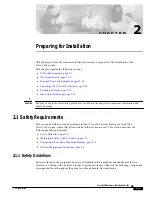
In the smallest voltage range, the meter may display an
unstable reading, specially when the testing leads have
not reached the circuit , this is normal because of the high
sensitivity of the meter. When the testing points touched the
circuit, you will get a true reading.
AC VOLTAGE
10Mohms input impedance, in all ranges
Protection against over range:
in 200mV range: 250VDC or VAC rms
in 2 to 1000V range: 1000VDC or 700VAC rms
Response: Average response, calibrated in sine wave rms
Frequency: 40 to 400Hz
Test in 60/50Hz
In the smallest voltage range, the meter will show an
unstable reading, specially when the testing leads have
not reached the circuit , this is normal because of the high
sensitivity of the meter. When the testing points touched the
circuit, you will get a true reading.
DC AMPS
Protection against over charge:
In 2mA to 200mA range: F1: 200mA / 250V fuse
in 10A range: F2: 10A / 250V
Maximum current input: mA connector: 200m
10A connector: 10A
Voltage loss: 200mV
ENGLISH
ENGLISH-5
Range
Resolution
Accuracy
2V
1mV
±1,0 % of rgd ± 5d
20V
10mV
±1,0 % of rgd ± 5d
200V
100mV
±1,0 % of rgd ± 5d
1000V
1V
±1,2 % of rgd ± 5d
Range
Resolution
Accuracy
2mA
1
μ
A
±1,0 % of rgd ± 3d
20mA
10
μ
A
±1,0 % of rgd ± 3d
200mA
100
μ
A
±1,5 % of rgd ± 5d
10A
10mA
±2,0 % of rgd ± 10d
In the smallest voltage range, the meter may display an
unstable reading, specially when the testing leads have
not reached the circuit , this is normal because of the high
sensitivity of the meter. When the testing points touched the
circuit, you will get a true reading.
In the smallest voltage range, the meter will show an
unstable reading, specially when the testing leads have
not reached the circuit , this is normal because of the high
sensitivity of the meter. When the testing points touched the
circuit, you will get a true reading.






































